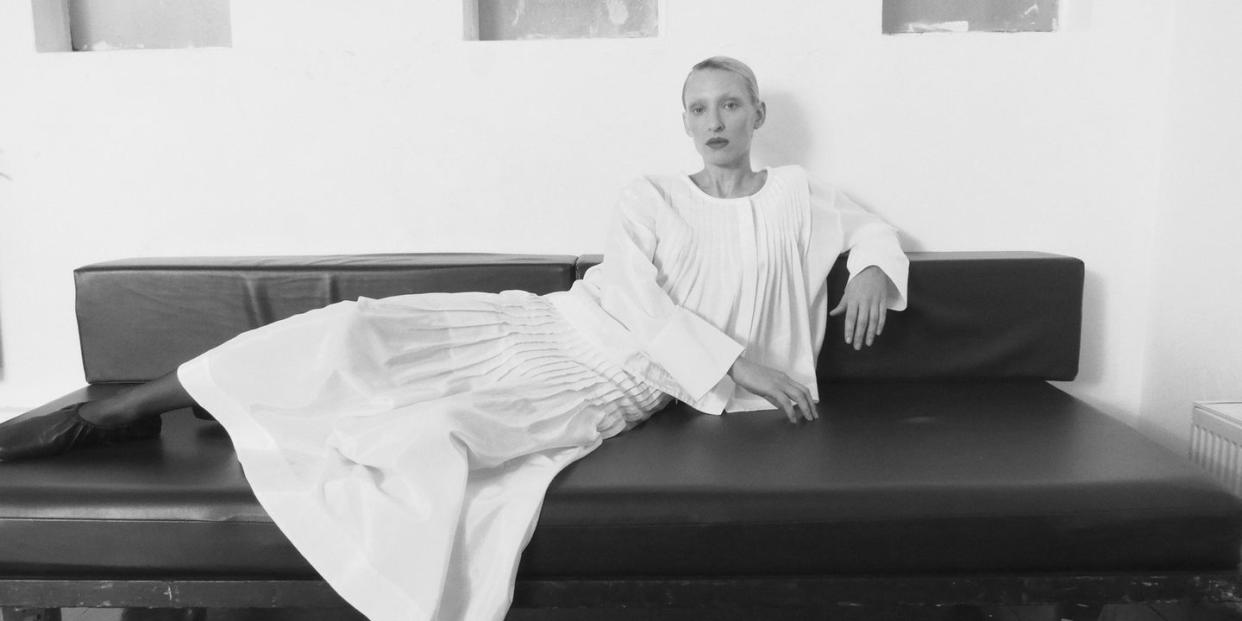Why you need to know about sustainable Swedish brand House of Dagmar

When it comes to sustainable fashion, it can be hard to know where to start. With an endless barrage of information, countless new and established brands to research, and a mass of confusing terminology out there, it's understandable that anyone might feel a little overwhelmed.
In light of this, every month we will focus on a brand that knows exactly what it means to be a sustainable force for good in fashion today. From debunking inaccuracies to advice for aspiring designers and tips for consumers on how to be kinder to the planet, we cut through the noise so that you don’t have to.
This month we’re getting to know House of Dagmar, a Swedish brand that captures the very essence of Scandinavian culture - a contemporary yet playful aesthetic that never goes out of style.

The label was founded in 2005 by three sisters, Karin Söderlind, Kristina Tjäder and Sofia Wallenstam, who wanted to carry on the legacy of their late grandmother Dagmar, who was a tailor and model. Her sense of style and dedication to creating high-quality, timeless fashion was the foundational inspiration of the brand's ethos.
House of Dagmar has had sustainability at the forefront of its business model since the beginning, originally launching with three sustainability pillars; high-quality fabrics, high-quality production processes, and high-quality designs.
Rosie Huntington Whiteley wearing House of Dagmar's Ellionor shirt
Since then, the brand has been working towards a greener future and has picked up some notable awards along the way. Most recently, House of Dagmar was awarded a partnership with Zalando during Copenhagen Fashion Week earlier this year (the first awardee with the online retailer), meaning the label will develop an exclusive collection that will explore sustainable solutions in design across materials, production processes, technological solutions and traceability.
The brand clearly takes sustainability seriously. Bazaar caught up with one third of the sister trio behind the brand, Sofia, to find out the key to its success over the years and why it's important to always strive to evolve your business into a better one.
What makes a truly sustainable brand?
"Start with a goal and a vision. Since we all know how difficult it may be for brands to do a transformation if they haven’t originated from a sustainable background, they should address their path to sustainability and let the customers follow them on the road trip."
How do you successfully run a sustainable business?
"It’s difficult during a pandemic. You need to set up a vision and goals and let your consumers know what those goals are. Let them hold you accountable to reach them. Always work hard and stay true to your vision."

What do you think needs to change in the industry?
"I think many aspects of the industry need to change. The way we look at fast fashion needs to change; we need to start thinking about the longevity of our fashion, as our grandmothers did during the sixties. They valued high quality over the number of pieces, and the clothes lasted for many generations."
What is the industry doing right?
"I think many up and coming brands have focused solely on the environmental challenges we’re facing and are taking these matters seriously, which is fantastic."

What do you want to achieve personally with your brand, in terms of sustainability?
"We want to be totally carbon neutral, to support climate change and be a truly environmentally friendly company."
What advice would you give to those wanting to make their business sustainable?
"Create your goals around what you want to achieve, support, or change. Then make a plan and divide it into achievable steps. Start to measure your footprint in terms of Co2, water and waste. You’ll learn a lot from this."

What’s the smallest change a consumer could make to become more eco-conscious?
"Make sure your everyday products are produced in sustainable fabrics. It should outline on the care label which fabrics it’s made with. Also, look for certificates on different fabrics as they are always a better alternative to the standard, and go from there."
What’re the most common inaccurate “facts” about sustainability you see pushed out?
"The production of garments and their fabric make up over 70 per cent of the Co2 pollution from companies like us. No one understands how important it is to use a material that is produced in environmentally friendly ways. We have to begin with the fabrics and the impact that they are having on the earth - both in terms of Co2 pollution and the use of harmful chemicals.

"We need to create materials that are biodegradable so we don't have any waste. Everyone has a duty to leave the earth in a good condition for our children’s sake."
What should consumers look out for when shopping sustainably?
"Educate yourself on different fabrics; search for certified fabrics as they are more reliable, and read the brand's homepage."
What’s the biggest misconception about sustainable clothing and what would you say to counteract this?
"That they can't be trendy and fun! I think we need to think about limiting ourselves to having fewer items of clothes and use them more often. You should use a product at least 100 times, preferably 200 times. We have to use our creativity when styling each garment differently each time we wear it."
Where do you turn to when you feel confused about sustainability?
"I always turn to our fabric suppliers when feeling confused or need more clarity, as they have great knowledge of sustainability, so I go straight to them."
In need of some at-home inspiration? Sign up to our free weekly newsletter for skincare and self-care, the latest cultural hits to read and download, and the little luxuries that make staying in so much more satisfying.
Plus, sign up here to get Harper’s Bazaar magazine delivered straight to your door.
You Might Also Like


